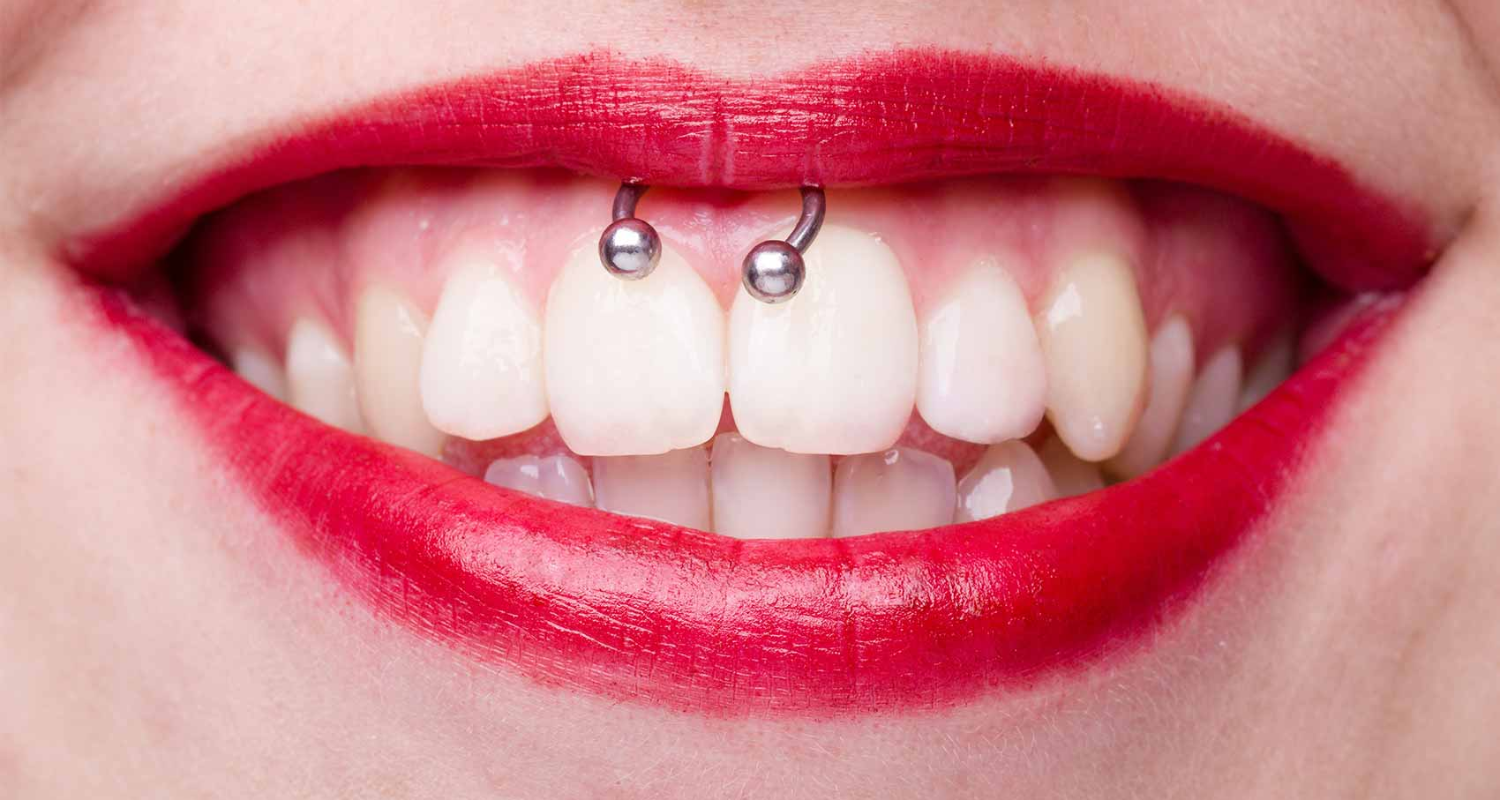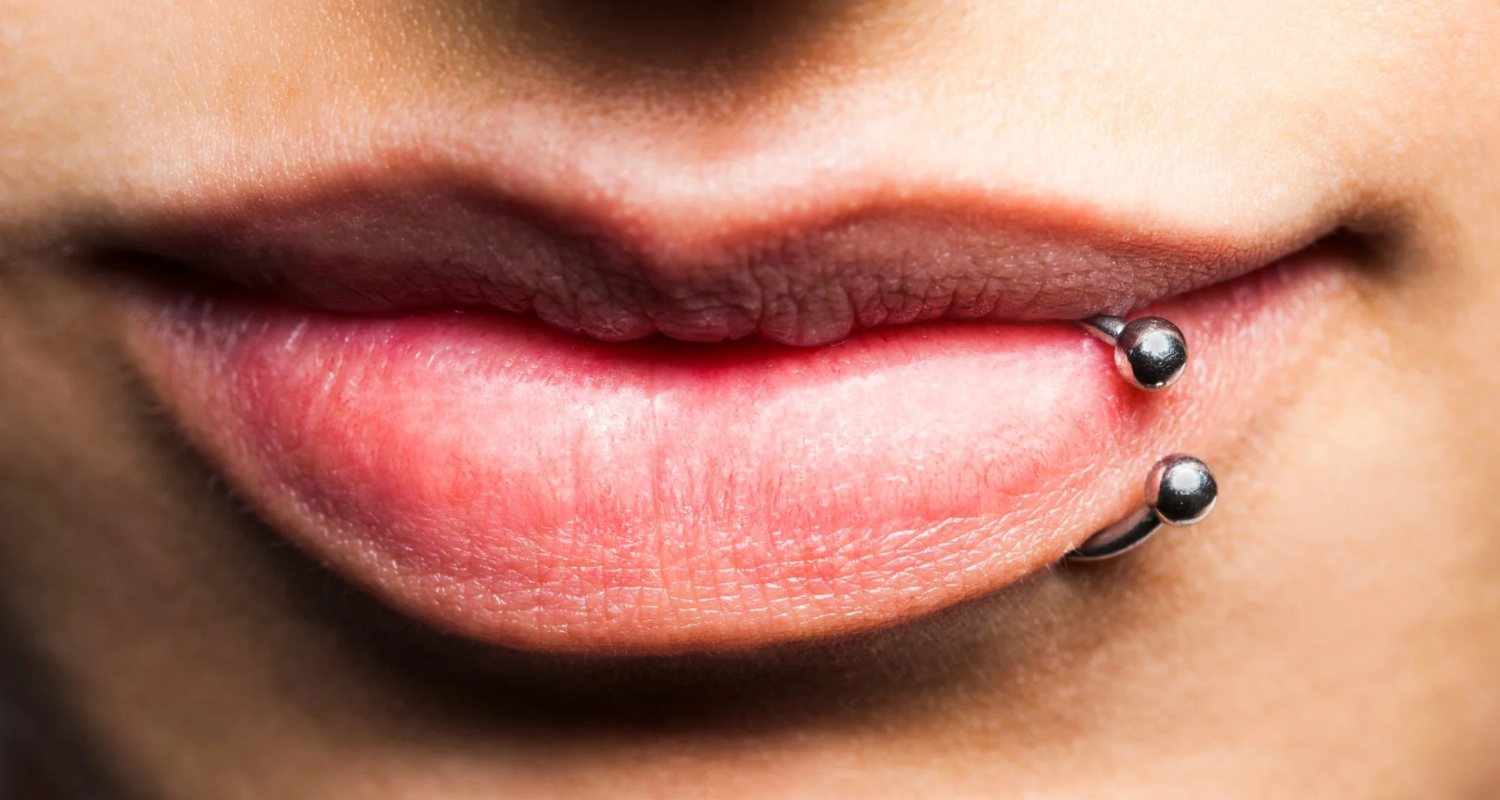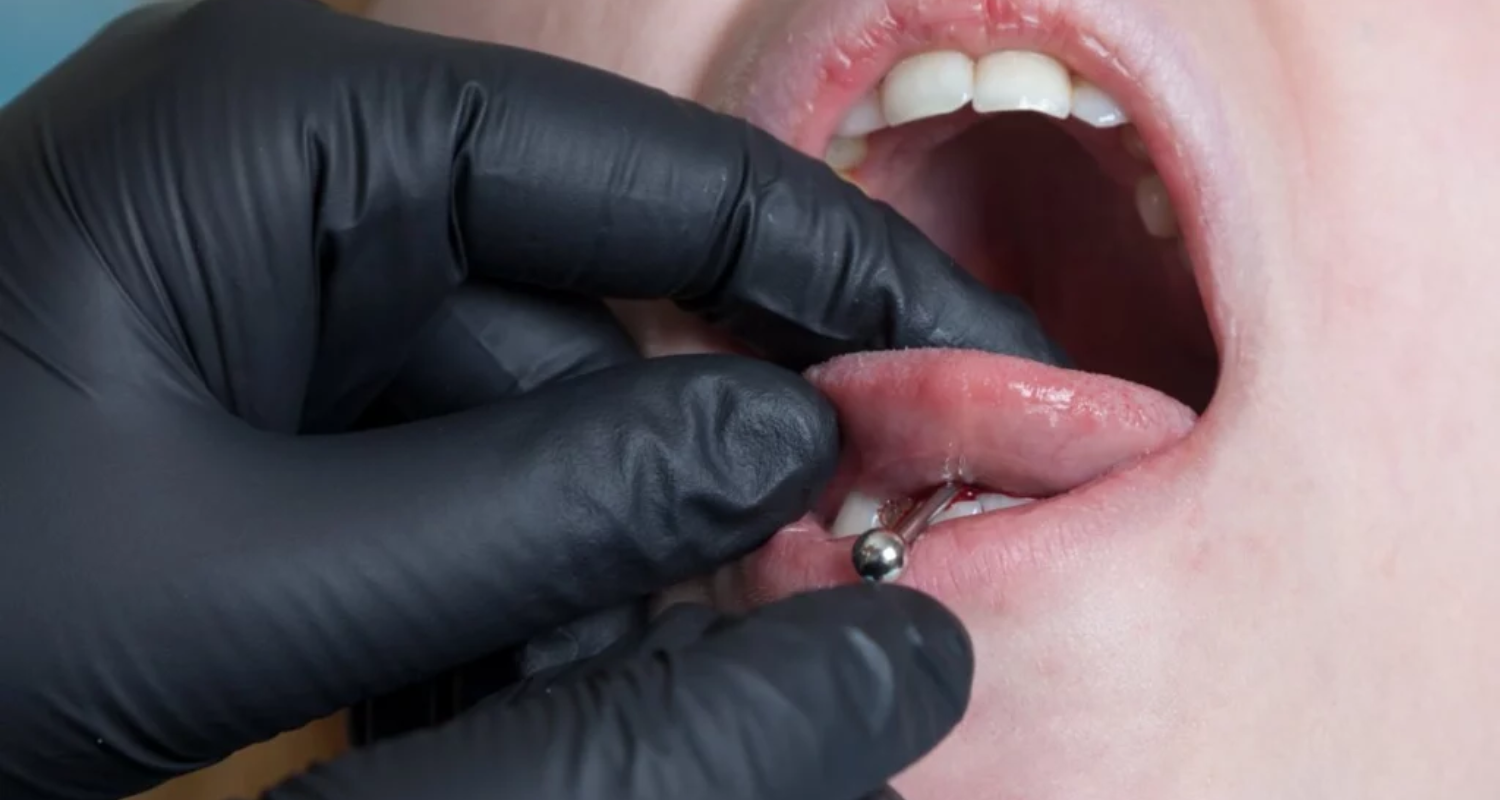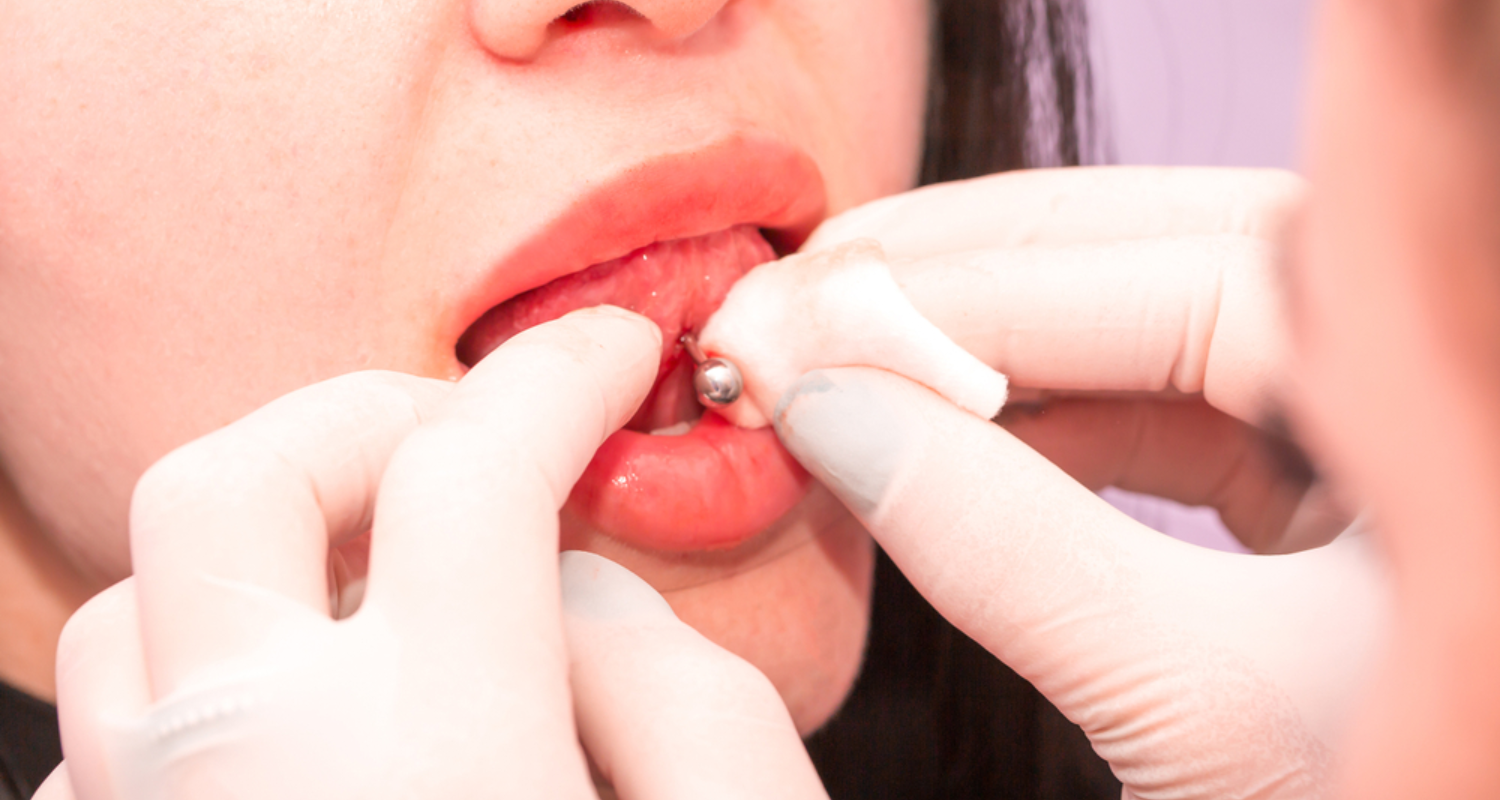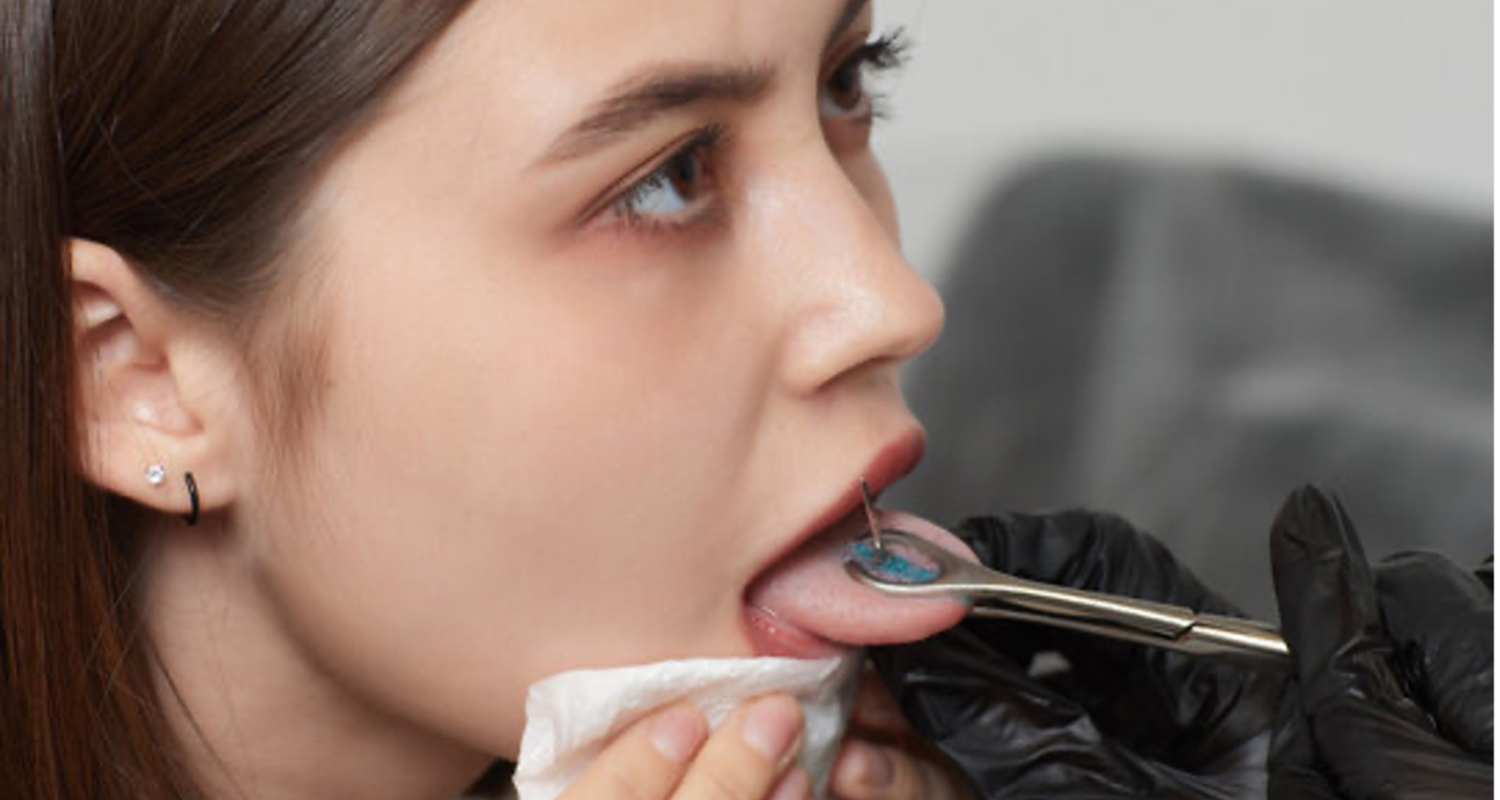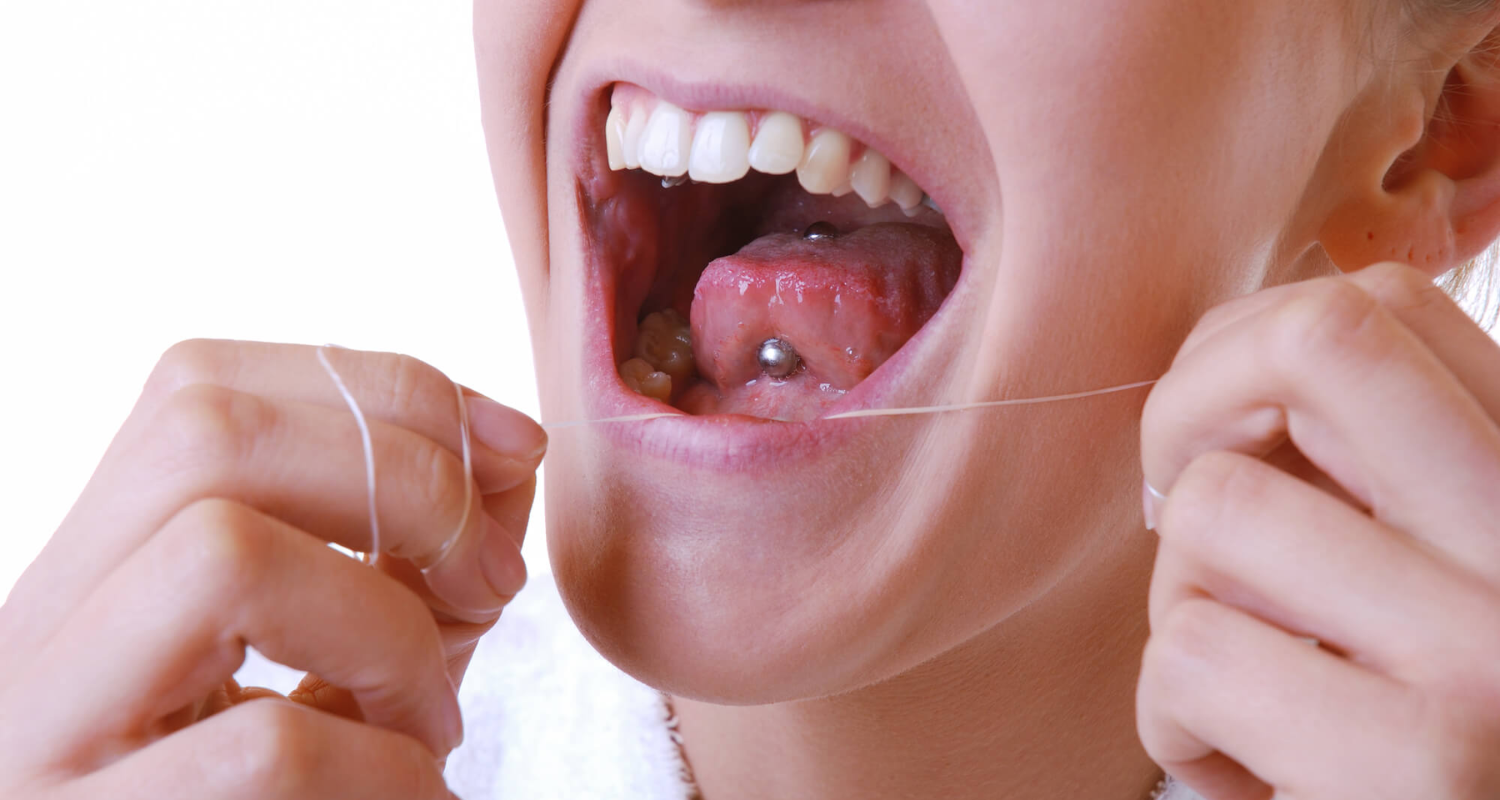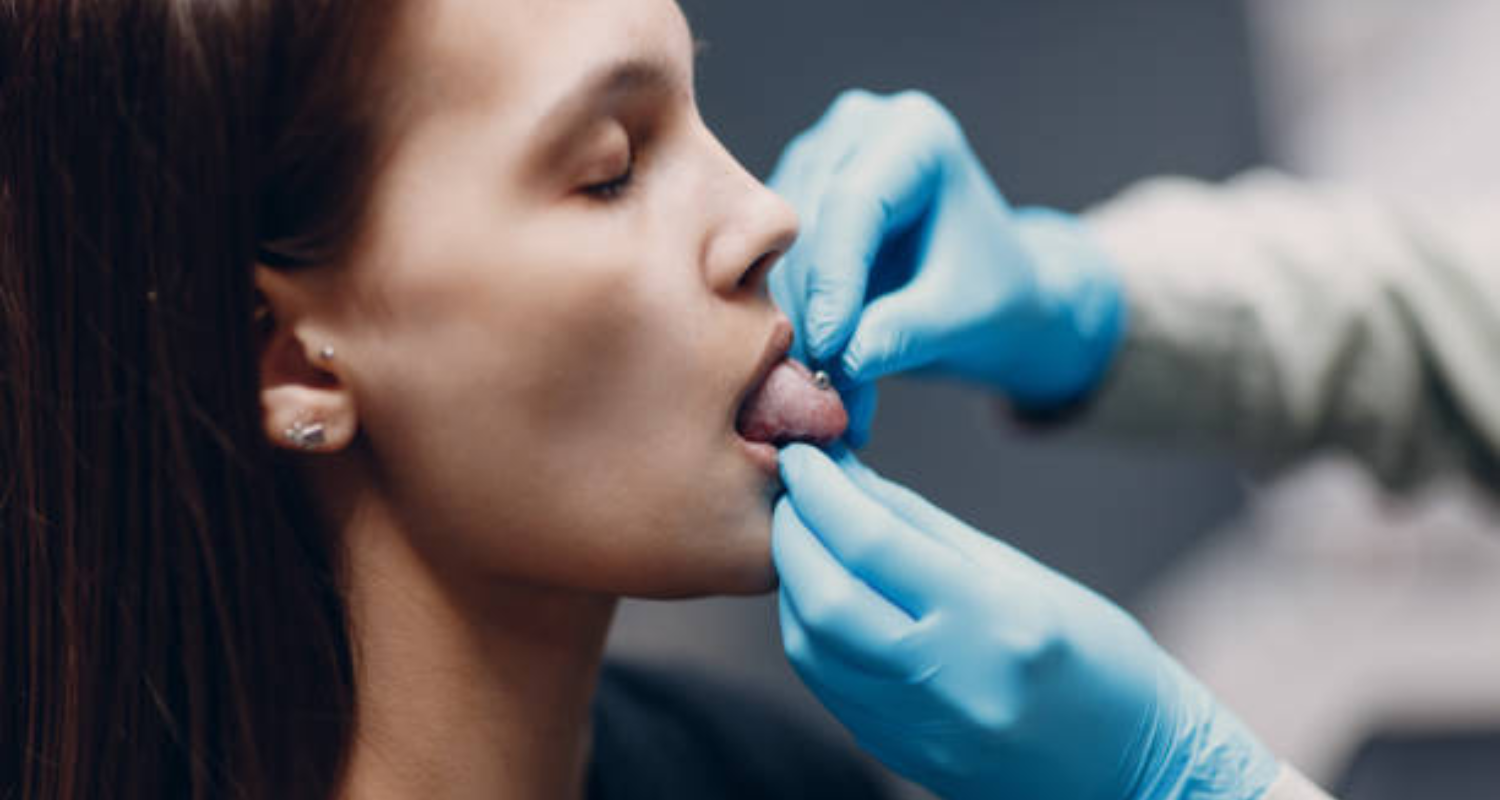Last Updated on: 19th September 2025, 12:35 pm
Oral piercings, including lip and tongue jewelry, have become a popular form of personal style. From elegant earrings to eye-catching rings, mouth piercings are a modern way to show individuality and creativity. Beyond their aesthetic appeal, however, it is essential to recognize that they require careful consideration and maintenance due to their close interaction with sensitive oral tissues.
It is critical to understand the impact of such piercings on oral health. While they can enhance your appearance, they can also pose risks such as gum irritation, chipped teeth, or even infections if not properly cared for. Whether you are considering a new piercing or already have one, being informed about the potential effects on your dental well-being is the first step to making a safe and healthy decision.
In this article, we will explore the different types of oral piercings, the risks they entail, and best practices for keeping your piercing clean and safe. By following expert advice and maintaining good oral hygiene, you can enjoy your piercing while protecting your smile.
What are mouth piercings?
Mouth piercings are perforations that are placed inside the oral cavity or in a component such as the lips, tongue and cheeks. Because of their location on the face and close relationship with the smile, some people consider them a versatile way to complement their appearance or demonstrate belonging to an urban “tribe”.
One of the most common mouth piercings is the one placed on the tip of the tongue, followed by those on the lips. It is important that piercings be performed in a safe place by a trained person to avoid infections and other complications that we will explain later.
Types of mouth piercings
Oral piercings can be classified according to their location in different areas of the mouth. Below are the most common locations:
● Tongue piercing: This involves piercing the tongue, usually in its central part, and completely through it. This is one of the most popular oral piercings.
● Lip piercing: This is done on the upper lip, lower lip or at the corners of the mouth. This type of piercing can go through the lip tissue and offer different variations such as the “labret” or “snake bites”.
● Cheek piercing: This pierces the cheeks from the outside to the inside of the mouth, simulating dimples. It is more invasive and requires special care.
● Frenulum piercing: This piercing goes through the tissue that connects the lips or tongue to the gums or floor of the mouth. The most common variations include the “smiley” (upper frenulum) and the “frowny” (lower frenulum).
● Uvula piercing: This type involves piercing the uvula, the tissue that hangs at the back of the throat. This is a rare type and carries greater risks.
● Lip frenulum piercing (smiley): This is placed horizontally on the frenulum that connects the upper lip to the gums, and is only visible when smiling.
These types of piercings offer a wide variety of options for those looking for a unique style, but it is always essential to consider the necessary care to avoid risks and complications.
How safe are mouth piercings?
Mouth piercings are safe as long as they are performed by trained personnel with the proper instruments and conditions; this includes sterile instruments, the appropriate jewelry, and in the case of single-use needles, that they are new and sterile.
Under these conditions the risks of infection decrease considerably; it is important that after a mouth piercings, you follow care and recommendations strictly.
Risks of mouth piercings
Although the placement of piercings is carried out with all the necessary hygiene provisions, it is not without some risk, since, like any intervention that involves a wound, it can lead to complications. Furthermore, beyond the risks associated with its placement, a piercing is a foreign body that can induce damage and cause changes to the structures of the mouth.
Below we explain the most common risks that arise after performing a piercing in the mouth, along with the consequences for general and oral health:
● Infections and inflammation: When the skin or mucous membranes are punctured, the natural barrier that protects the body against infection is broken. In and around the mouth are a large number of bacteria that can take advantage of this breakdown, causing infections and inflammation. The risk increases if the piercing is performed in unhygienic conditions or by people without the requisite experience. In some cases, the infection can become serious, invading other parts of the body or preventing breathing and endangering your health.
● Tooth damage: Piercings in the mouth are foreign elements that break the balance present in the oral cavity. Their use generates wear on the tooth enamel and may even fracture the teeth, generally due to the habit of biting the jewelry and constant friction with teeth and gums.
● Gum recession: Piercings, especially those located in the labial frenulum, can cause gum recession, exposing the roots of the teeth. This can cause tooth sensitivity and also aesthetic problems in the smile.
● Difficulties speaking and eating: The presence of perforations in the mouth limits and makes certain actions such as speaking, chewing and swallowing difficult. Pronouncing some words requires a specific position of the tip of the tongue, and the presence of jewelry limits the movement and contact of the tongue, producing a different or difficult to understand sound.
● Allergic reactions: Allergies to nickel jewelry or other materials is common; this manifests with redness in the area and in some cases oozing. In these cases, it is wise to switch to jewelry made of hypoallergenic materials such as titanium or surgical steel, which will promote effective healing of the piercing.
● Nerve damage: During the piercing process in sensitive areas such as the tongue or lip, there is a risk of irreversibly damaging the nerve endings that allow the perception of flavors and sensations. It can be prevented by going to a qualified place with properly trained and experienced personnel.
● Scars: It is important to consider that in some areas such as the lips and cheeks, poor or unaesthetic healing may occur once you decide to remove or stop using the piercing. These scars, called keloids, can be an unpleasant after-effect of oral piercings. Although they can be removed, it is an expensive and in some cases painful procedure.
Serious complications after placing mouth piercings
Previously we mentioned the mild and moderate complications of the placement of cosmetic piercings in the mouth. However, more serious complications can have irreversible consequences. Among them:
Blood-borne infections: There are microorganisms with a long-lasting presence in the blood or instruments contaminated with them; they cause serious diseases that can, in the worst cases, be lethal. These are called blood-borne pathogens and can be transmitted by reusing single-use needles. The most common are:
● Hepatitis B virus (HBV) and hepatitis C virus (HCV): they cause liver damage that has no cure.
● Human Immunodeficiency Virus (HIV): it weakens the immune system and could cause AIDS. It has no cure.
Under strict hygienic conditions, the risk of suffering from these infections is almost non-existent. However, going to an unhygienic place – where due to economy or lack of knowledge, single-use needles are reused and the instruments used for piercing are not adequately sterilized – significantly increases the risk of transmission of these diseases.
Serious bacterial infections: If an infection occurs when performing the piercing that is not adequately treated, it could spread to the rest of the body and even require hospital management. The risk is higher in people who have weakened immune systems:
-Diabetic patients.
-Patients undergoing oncological or immunosuppression treatment.
-People who have received organ transplants.
-People living with HIV.
If you develop fever, chills or general malaise after a piercing, see a doctor immediately, as you may require urgent antibiotic treatment.
Other infections:
Tetanus: this is a serious disease of the nervous system that produces muscle contractions, caused by a toxin-producing bacteria called Clostridium tetani. It is rare in the United States, since babies are vaccinated at birth. However, this does not happen in all countries, so it is advisable to verify that you have this vaccine on your schedule.
How to care for mouth piercings?
If you had a piercing in your mouth, you should know about care before and after the procedure, since preventing infections and achieving more effective recovery and healing depends on it.
Immediate care after a mouth piercing:
1. Try to maintain adequate oral hygiene: Brush your teeth regularly with a correct technique. The presence of bacterial plaque on your teeth can increase the risk of infection and inflammation.
For this, you’ll need a toothbrush with soft bristles. If you’re looking for better options, click here.
2. Place ice or cold packs on the piercing: The cold reduces inflammation and pain after piercing, you can use them for the first 24 hours, without putting pressure on the piercing area and intermittently. Eating water popsicles is a good option.
3. Use alcohol-free mouthwash: Mouthwashes have antibacterial compounds that reduce the amount of bacteria in the mouth; this can help prevent infections and complement your oral hygiene. You can use a salt water rinse for this purpose. You can do it twice a day. If you want to know great options for alcohol-free mouthwahs, here are the best.
4. Avoid touching or handling the jewelry with dirty hands: If you need to adjust or manipulate the piercing jewelry in your mouth, try to do it with thoroughly washed hands and in a clean environment.
5. Avoid irritating foods: You should avoid some foods that can cause burning and irritation of your mouth piercing, such as salty, spicy, acidic, and high-fat foods.
6. You should not smoke or consume alcohol: The substances present in alcohol and tobacco delay the healing process and can trigger serious infections.
Daily care routine if you have a piercing in your mouth:
In the morning:
● Brush your teeth gently with a soft-bristled toothbrush.
● Wash the piercing and surrounding areas with warm water to remove plaque buildup or overnight debris.
● Use an alcohol-free mouthwash or rinse with salt water to disinfect the area.
After each meal:
● Rinse your mouth with warm water or an alcohol-free mouthwash to remove food debris and bacteria.
● Avoid unnecessary contact with the jewelry during cleaning.
Area inspection:
● Check that the jewelry is well adjusted (without tightening it).
● Make sure there is no redness, excessive swelling, or abnormal discharge.
Afternoon/Night:
● Perform deep oral hygiene: brush your teeth and tongue gently, paying special attention to not irritating the pierced area.
Preventive care:
● See the dentist every 6 months.
● Avoid smoking, consuming alcohol or irritating foods such as spicy, acidic or very salty.
● Do not bite or play with the jewelry, as this may damage tissue or delay healing.
Our advice for get a better oral health if you use oral piercings, is to have the correct tools: toothbrush, toothpaste, mouthwashes, etc. Look over here recommendations.
What should you keep in mind if you want to get a mouth piercings?
If after thinking about it with a cool head and consulting it with your pillow, you made the decision to get a piercing in your mouth, it is important to take into account the recommendations that we will give you:
1. Choose a trusted professional, who has experience and the aseptic conditions necessary for a safe procedure. You can consult qualified places so that your procedure is a good experience. This information is available on pages such as Association of Professional Piercers.
2. Infection prevention is never enough. Preferably, keep your vaccination schedule up to date against Hepatitis B and Tetanus.
3. The jewel you choose also matters, a good quality jewel guarantees faster healing and a lower risk of allergic reactions and infections. For mouth piercings, we suggest titanium or stainless steel metal jewelry.
4. Follow the recommendations and instructions of your piercer, you can ask them questions regarding the piercing and follow the recommendations given in this article.
5. Attend regular checkups with the piercer to rule out healing problems, infections or associated problems. It is important that you attend the dentist because oral health problems can affect the healing of the piercing in the mouth.
6. Some jewelry is designed to facilitate the healing and adaptation of the piercing in the mouth; these must be replaced once the healing time has passed, which is generally 8 to 15 days. Then you must adapt the jewel to your liking and continue with an optimal hygiene care routine.
Oral piercings, while a bold and stylish form of self-expression, require careful consideration and proper care to ensure they do not compromise your oral health. By understanding the types of piercings, their potential risks, and best practices for maintaining hygiene, you can enjoy your piercing and minimize complications.
Whether you’re planning to get a piercing or already have one, remember that consistent oral hygiene, regular checkups with a dentist, and adhering to your piercer’s recommendations are essential. With proper care and precautions, you can confidently show off your unique style while maintaining a healthy and bright smile.
Frequently Asked Questions
What do dentists think of lip piercings?
Dentists generally view lip piercings with caution due to their potential impact on oral health. While they respect personal expression, they often highlight risks like gum recession, chipped teeth, and infections caused by the jewelry’s constant contact with oral tissues. Dentists recommend regular checkups and proper care to minimize them.
Are mouth piercings safe?
Mouth piercings can be safe if performed by experienced professionals under strict hygiene conditions and if proper aftercare is followed. However, they still pose risks like infections, gum damage, or chipped teeth. Choosing high-quality jewelry and maintaining good oral hygiene are essential for maximum safety.
How painful is a mouth piercing?
Pain levels vary depending on the location of the piercing and individual pain tolerance. Generally, most people describe the pain as a sharp pinch during the procedure, followed by some soreness or swelling that subsides in a few days. Proper aftercare, such as using saltwater rinses, can help manage discomfort.
How do I keep my lip piercing from ruining my teeth?
To prevent damage, avoid playing with the jewelry or biting on it, as this can chip teeth or cause gum recession. Choose jewelry made from biocompatible materials like titanium or surgical steel. Regularly check that the jewelry is properly fitted and clean to reduce the risk of irritation or infection.
What materials are best for mouth piercings?
Dentists and piercers recommend hypoallergenic materials like titanium, surgical steel, or bioplast. These materials are less likely to cause allergic reactions or irritation and promote better healing compared to cheaper metals that may contain nickel. Always consult your piercer about the best options for your specific piercing.
Share
References
1. Higuera, V. (2020, 31 agosto). Getting Tattooed or Pierced. Healthline. https://www.healthline.com/health/beauty-skin-care-tattoos-piercings
2. Malcangi, G., Patano, A., Palmieri, G., Riccaldo, L., Pezzolla, C., Mancini, A., Inchingolo, A. D., Di Venere, D., Piras, F., Inchingolo, F., Dipalma, G., & Inchingolo, A. M. (2023). Oral Piercing: A Pretty Risk—A Scoping Review of Local and Systemic Complications of This Current Widespread Fashion. International Journal Of Environmental Research And Public Health, 20(9), 5744. https://doi.org/10.3390/ijerph20095744
3. Oral Piercing Risks & Proper Oral Hygiene. (s. f.). Colgate. Recuperado 9 de January de 2023, de https://www.colgate.com/en-us/oral-health/threats-to-dental-health/oral-piercings#
4. Oral Piercing/Jewelry. (s. f.). American Dental Association. https://www.ada.org/resources/ada-library/oral-health-topics/oral-piercing-jewelry
5. WebMD Editorial Contributor. (2023, 24 January). What to Know About Oral Piercing. WebMD. https://www.webmd.com/oral-health/oral-piercing
-
Dr. Yeidy Carolina Mesa [Medical Reviewer]
DDS Yeidy Carolina Mesa Passionate Dentist | Advocate for Accessible Oral Health Education Graduating from Universidad CES in 2022, I am a dedicated general dentist with a lifelong passion for helping others and making a meaningful impact in the world. My journey into dentistry began at the age of 7, inspired by my own experience with braces and overcoming a fear of the dentist. This personal journey shaped my mission to help patients conquer their own dental anxieties and embrace a healthier,...
View all postsRecent Posts


